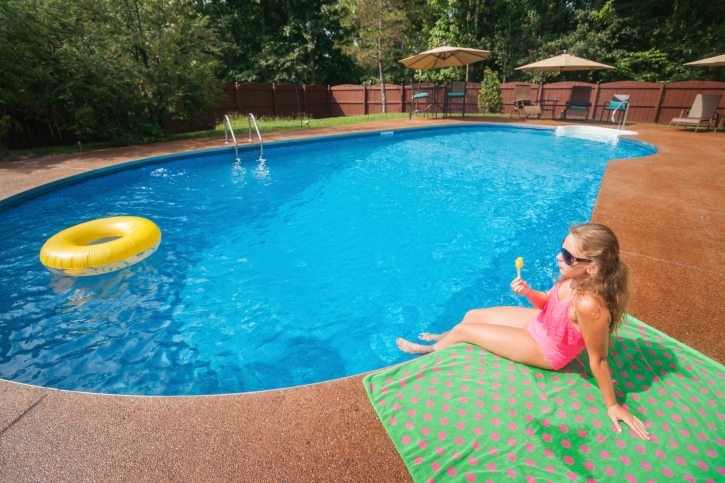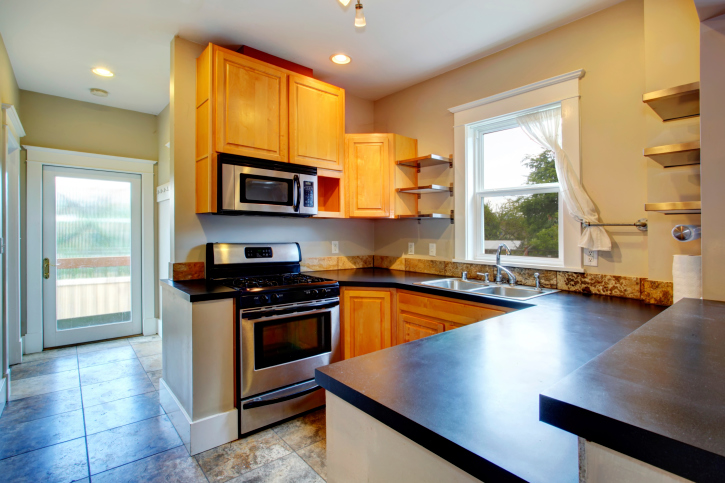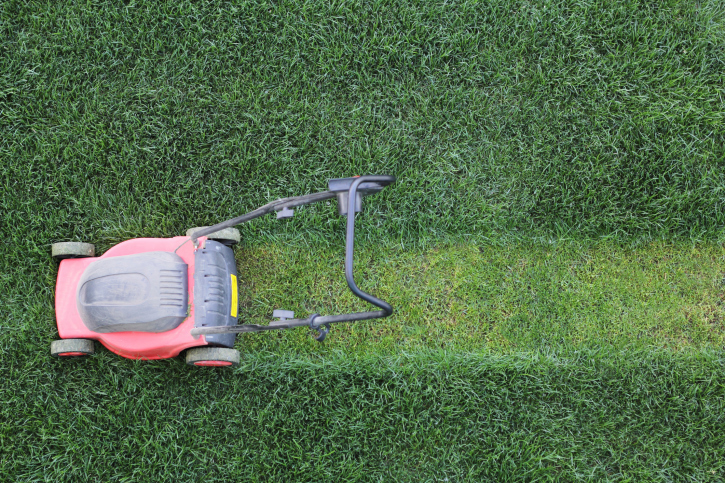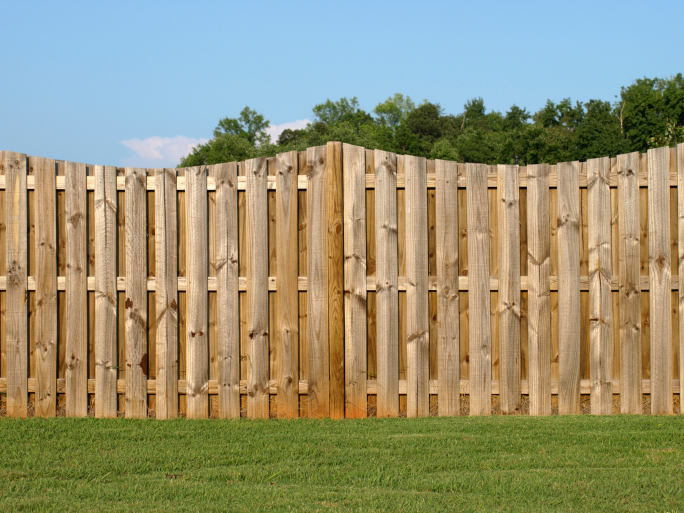 Many people look forward to the long, relaxed, sunny days of summer, but they also dread opening up their energy bills throughout the summer months. Cooling a home can be costly, and many are searching for convenient ways to lower cooling costs without sacrificing on comfort inside the home on the warmest days of the year. These are just a few of the cost-effective and convenient options that can help homeowners to reduce cooling costs throughout the summer.
Many people look forward to the long, relaxed, sunny days of summer, but they also dread opening up their energy bills throughout the summer months. Cooling a home can be costly, and many are searching for convenient ways to lower cooling costs without sacrificing on comfort inside the home on the warmest days of the year. These are just a few of the cost-effective and convenient options that can help homeowners to reduce cooling costs throughout the summer.
Keep The Blinds Closed
A significant amount of heat can enter a home through the windows, and blinds and curtains provide an extra layer of insulation between the window glass and the interior of the home. Some types of blinds and curtains are more effective at blocking heat than others, and homeowners may consider making an upgrade for the best results. For example, wood blinds can block significantly more heat than thin, almost translucent sheers.
Run The Ceiling Fans
Another way to keep cooling costs lower throughout the summer months is to run ceiling fans regularly. Ceiling fans help to circulate the air, and this helps the central cooling system function more efficiently. In addition, ceiling fans also can make those who are in the room feel cooler, and this may mean that homeowners can keep the home’s thermostat set at a slightly higher level than it otherwise would need to be set at for comfort indoors.
Use Heat-Generating Features At Night
There are numerous appliances and types of equipment that may be used indoors throughout the summer that can generate a considerable amount of heat, and running these at night can reduce the need to run the central cooling system as much during warm days. Consider that everything from running the washing machine and dryer to using the dishwasher and oven or range can emit heat in the home, and these serve to counteract the work that the cooling system is doing. When possible, limit the use of these features to cooler nighttime hours.
Keeping the home cool throughout the summer is a top priority for most, and the good news is that there are easy ways to reduce the cost associated with keeping a home cool. These ideas all can be beneficial in a homeowner’s quest to reduce energy costs during the summer.
If your current home is a real energy hog and you are ready to move into a more energy efficant option, make sure to speak with your trusted real estate professional for a look at newer energy efficant homes in your area.
 The warmer summer months provide homeowners with the ideal conditions for making improvements to their property, and many will want to put installing an in-ground swimming pool at the top of their list of improvement ideas. While a swimming pool may seem like a pure luxury to some, there are actually considerable benefits that homeowners can enjoy by making this improvement. With closer consideration, homeowners may decide that this is the perfect improvement to make to their property.
The warmer summer months provide homeowners with the ideal conditions for making improvements to their property, and many will want to put installing an in-ground swimming pool at the top of their list of improvement ideas. While a swimming pool may seem like a pure luxury to some, there are actually considerable benefits that homeowners can enjoy by making this improvement. With closer consideration, homeowners may decide that this is the perfect improvement to make to their property. House fires can break out for a wide range of reasons, and these include everything from grease fires while cooking in the kitchen to lightning striking the home. They can cause a significant amount of property damage as well as personal injury or even loss of life, so preventing them and knowing how to properly respond if a fire does break out are important. Whether buying a new home or residing in an existing home, everyone can benefit from learning more about fire safety rules.
House fires can break out for a wide range of reasons, and these include everything from grease fires while cooking in the kitchen to lightning striking the home. They can cause a significant amount of property damage as well as personal injury or even loss of life, so preventing them and knowing how to properly respond if a fire does break out are important. Whether buying a new home or residing in an existing home, everyone can benefit from learning more about fire safety rules. It can be frustrating to deal with dead zones with your wireless and cellular coverage while you are out and about. However, overcoming dead zones in public areas may be as simple as relocating to a different area in a building or walking to a new location. Dead zones may also be present in residential homes and apartment buildings. If you have a dead zone in your home, this issue can easily cause you considerable frustration on a daily basis, and you may be wondering what steps you can take to overcome the problem.
It can be frustrating to deal with dead zones with your wireless and cellular coverage while you are out and about. However, overcoming dead zones in public areas may be as simple as relocating to a different area in a building or walking to a new location. Dead zones may also be present in residential homes and apartment buildings. If you have a dead zone in your home, this issue can easily cause you considerable frustration on a daily basis, and you may be wondering what steps you can take to overcome the problem. Updating your kitchen may be a project that you have been looking forward to for a long time. Now that the time has come to get started working on your project, you may be exploring the different materials that are available to use in your kitchen. The counter tops are often a prime focal point for a kitchen remodeling project. While there are several materials available to consider, concrete may be the best option for a number of reasons.
Updating your kitchen may be a project that you have been looking forward to for a long time. Now that the time has come to get started working on your project, you may be exploring the different materials that are available to use in your kitchen. The counter tops are often a prime focal point for a kitchen remodeling project. While there are several materials available to consider, concrete may be the best option for a number of reasons. In many areas, the spring months mean warmer temperatures, more sunshine and plenty of beneficial rainfall that your yard may thrive with. These are prime growing conditions for your lawn, but they can also make lawn maintenance a challenge. By following these helpful tips, you can take better care of your yard during the rainy spring season.
In many areas, the spring months mean warmer temperatures, more sunshine and plenty of beneficial rainfall that your yard may thrive with. These are prime growing conditions for your lawn, but they can also make lawn maintenance a challenge. By following these helpful tips, you can take better care of your yard during the rainy spring season. When your home is no longer fully functional for your needs, you may be thinking about moving into a larger home with a more functional floor plan. While this is one option to consider, another option is to renovate your existing home. You could build a wing onto your home, or you could add a second story to the property. There are several reasons why adding a second story to your floor plan may be the best solution for you.
When your home is no longer fully functional for your needs, you may be thinking about moving into a larger home with a more functional floor plan. While this is one option to consider, another option is to renovate your existing home. You could build a wing onto your home, or you could add a second story to the property. There are several reasons why adding a second story to your floor plan may be the best solution for you. Relocating to a new area can be exciting, but it can also be expensive. There are many resources to help, but most cost money. However, if you take your time and plan carefully, you can reduce the expense so you don’t start your new life with new debt. Here are three tips to controlling your moving budget.
Relocating to a new area can be exciting, but it can also be expensive. There are many resources to help, but most cost money. However, if you take your time and plan carefully, you can reduce the expense so you don’t start your new life with new debt. Here are three tips to controlling your moving budget. If your home is located in a flood zone, it’s critical that you know how to get ready for those drenching spring rains. Here are some basic steps any homeowner can take to prepare for potentially devastating floods.
If your home is located in a flood zone, it’s critical that you know how to get ready for those drenching spring rains. Here are some basic steps any homeowner can take to prepare for potentially devastating floods. With many types of home improvements, at least a portion of the cost that you put into the improvement can be recouped from additional value when you sell the home.
With many types of home improvements, at least a portion of the cost that you put into the improvement can be recouped from additional value when you sell the home.